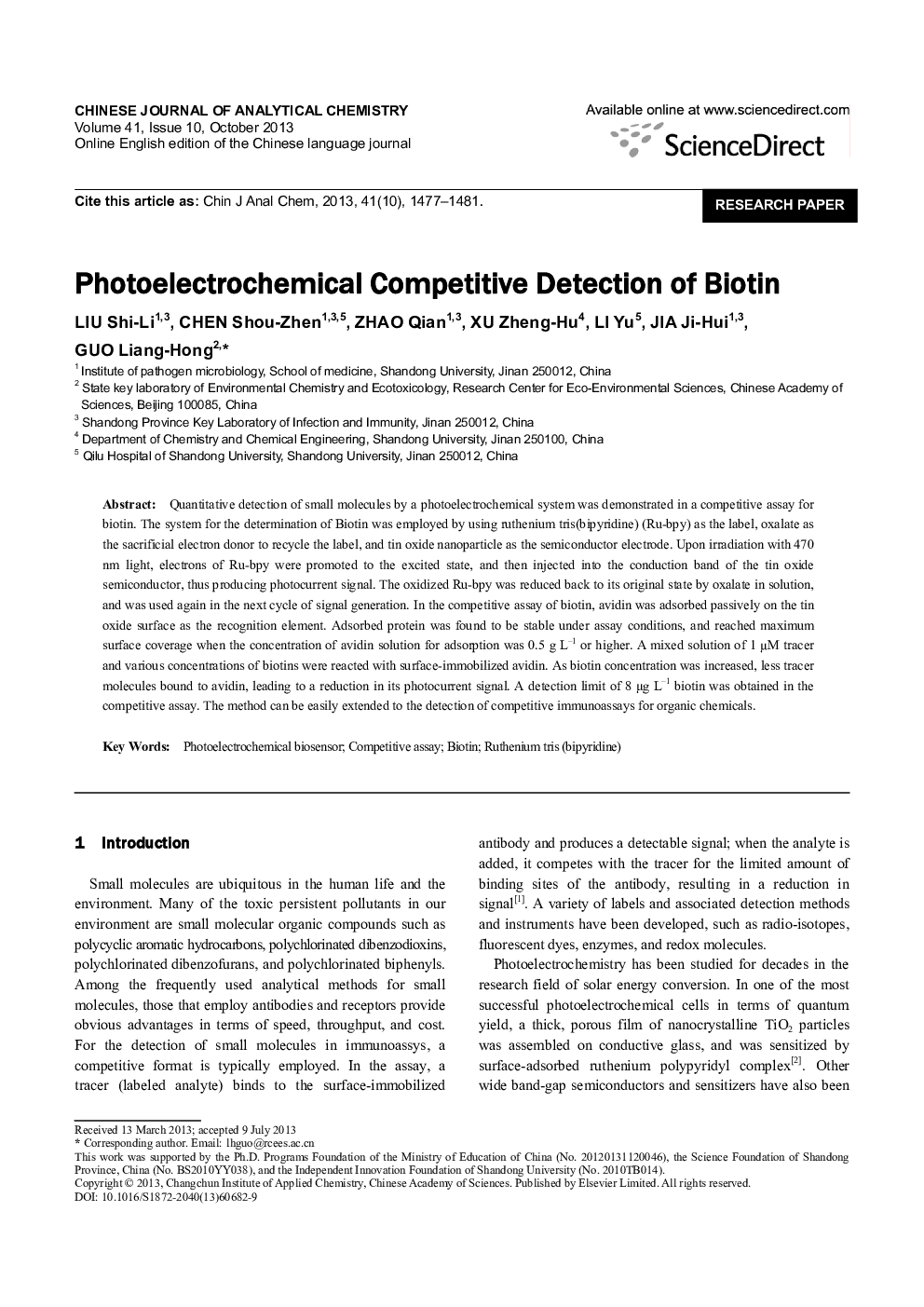| Article ID | Journal | Published Year | Pages | File Type |
|---|---|---|---|---|
| 1181853 | Chinese Journal of Analytical Chemistry | 2013 | 5 Pages |
Quantitative detection of small molecules by a photoelectrochemical system was demonstrated in a competitive assay for biotin. The system for the determination of Biotin was employed by using ruthenium tris(bipyridine) (Ru-bpy) as the label, oxalate as the sacrificial electron donor to recycle the label, and tin oxide nanoparticle as the semiconductor electrode. Upon irradiation with 470 nm light, electrons of Ru-bpy were promoted to the excited state, and then injected into the conduction band of the tin oxide semiconductor, thus producing photocurrent signal. The oxidized Ru-bpy was reduced back to its original state by oxalate in solution, and was used again in the next cycle of signal generation. In the competitive assay of biotin, avidin was adsorbed passively on the tin oxide surface as the recognition element. Adsorbed protein was found to be stable under assay conditions, and reached maximum surface coverage when the concentration of avidin solution for adsorption was 0.5 g L−1 or higher. A mixed solution of 1 μM tracer and various concentrations of biotins were reacted with surface-immobilized avidin. As biotin concentration was increased, less tracer molecules bound to avidin, leading to a reduction in its photocurrent signal. A detection limit of 8 μg L−1 biotin was obtained in the competitive assay. The method can be easily extended to the detection of competitive immunoassays for organic chemicals.
Graphical abstractQuantitative detection of small molecules by a photoelectrochemical system was demonstrated in a competitive assay for biotin. In this experiment avidin was immobilized on a SnO2 electrode to capture the biotin and tracer in solution, and the amount of biotin was quantified by measuring the photocurrent of the tracer upon irradiation with 470 nm light. A detection limit of 8 μg L−1 biotin was obtained in this competitive assay.Figure optionsDownload full-size imageDownload as PowerPoint slide
